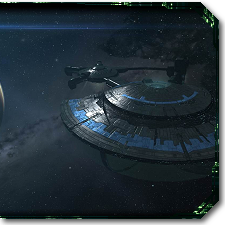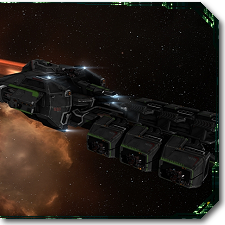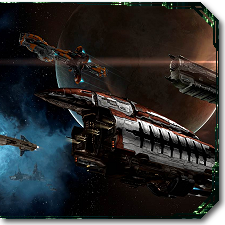EVE Fanfest 2014: EVE's Kronos expansion is an industrial revolution
The EVE Online keynote presentation finished just a few hours ago at EVE Fanfest 2014, and it looks as if there are big plans for the year ahead. This summer will bring us the Kronos expansion, which is scheduled for June 3rd and aims to revolutionise every aspect of industrial activity in EVE Online in terms of both gameplay and accessibility. The economy has become quite stagnant over the past year as players have long since worked out all the most efficient ways to manufacture and trade, so CCP has planned its very own industrial revolution with a complete overhaul of industrial gameplay.
Kronos also marks another important milestone for CCP, as the company will be switching from releasing two major expansions per year to a more agile strategy of releasing 10 smaller updates each year. The Kronos release was originally planned as a full expansion before the changeover to a 10-release schedule, so it's as packed as a full expansion. In addition to a deluge of industry overhauls, we'll be getting a shiny new mining ship, major pirate faction ship revamps, an enhanced new player experience, and a cool new effect when players warp into or out of an area.
Read on for a breakdown of the EVE keynote presentation and to find out why CCP is moving away from its usual two expansions per year.
Expansions are so last year
The idea behind moving away from two expansions per year is that developers won't have to rush features to get them into an expansion and can delay them until the next release schedule if necessary. Missing a release window now means a few weeks of delay on a feature making it to the live servers instead of a six-month wait. EVE has been developed using agile methodologies for the past few years very successfully, but the artificial target of cramming a bunch of content and features into one update every six months breaks that workflow.
CCP has been doing incremental releases already for the past year by patching in major features in each of the Rubicon and Odyssey point releases, but this will now be the official schedule. The releases will come roughly once every six weeks, and each one will get its own name that isn't specifically related to the content. Some will be small updates; others will introduce big features.
Kronos revamps industry
The goals of Kronos include making all the industrial gameplay accessible to even new players and to ensure that every industrial activity follows the risk-vs.-reward design philosophy. The user interfaces have been revamped to make them easier for new players to understand, and new dynamic pricing of manufacturing slots means players will have a financial incentive to manufacture in dangerous, underused areas of lowsec. Manufacturers will have to re-examine their business arrangements frequently to be sure they're still running an efficient operation, and they may have to move production to alternative locations to squeeze out a bit more profit.
Mineral compression has been made financially redundant by reducing the mineral yield from refining items and ships to around 55%, but the Rorqual's ore compression service is being buffed by about 38% to hopefully fulfill the same role. Players will controversially also no longer be able to install manufacturing jobs in starbases remotely from the safety of an NPC station. To take advantage of starbase manufacturing and labs, players will have to put their blueprints at risk by putting them into the starbase itself. This is likely to spark some wars against corps with starbases, especially as the expansion will also allow anyone to install a starbase in all highsec systems.
Changes to mining and hauling ships
Mining barges will be getting some teeth with the addition of some extra firepower and may finally be able to defend themselves against opportunistic interceptor or frigate pilots. Freighters and jump freighters will finally be getting rig slots so they can be customised for particular roles. Players will have to choose between expanding their cargo capacity further, increasing hull hitpoints, or augmenting warp speed and agility. Blockade Runners have been given an extra high slot, making them perfect for ninja-looting and salvaging battlefields in nullsec and faction warfare lowsec, and Transport ships will be getting a further defensive buff.
The big announcement was the introduction of a new ORE ship named the Prospect, which will be the first of a new breed of expedition ship. It's based on the tech 1 Venture mining frigate and has the same bonuses but will have double the ore bay size, enough cargo bay capacity to store a mobile depot, and the ability to fit a covert ops cloaking device.
Pirate faction ship changes
The Kronos expansion also includes a laundry list of ship changes, like a complete visual redesign of the Caldari Moa and Condor and 12 new cosmetic ship skins being released to major buffs to each of the pirate faction ships. Blood Raider ships will have the special ability to drain energy with nosferatu regardless of enemy capacitor levels, making nosferatu setups potentially as effective as neutraliser fits. Guristas ships are getting a bonus to make their drones practically indestructible, and Serpentis ships will retain their super-powered stasis webs.
Sansha ships are getting massive bonuses to afterburners, making them effectively like microwarpdrives that can't be shut off with a warp scrambler, and the Angel Cartel will be getting enhanced warp drive speed to let them chase targets between systems much more effectively. Starting in Kronos, Mordu's Legion will also be getting its own pirate faction ships; dedicated missile platforms with extended warp disruption range.

Whether you're a die-hard fan of internet spaceships or just a gawker on the sidelines, EVE Fanfest is the EVE Online event of the year (and the key source of new Valkyrie scoops!). Follow Massively's Brendan Drain as he reports back on this year's Fanfest starpower, scheming, and spoilers from exotic Reykjavik, Iceland.






